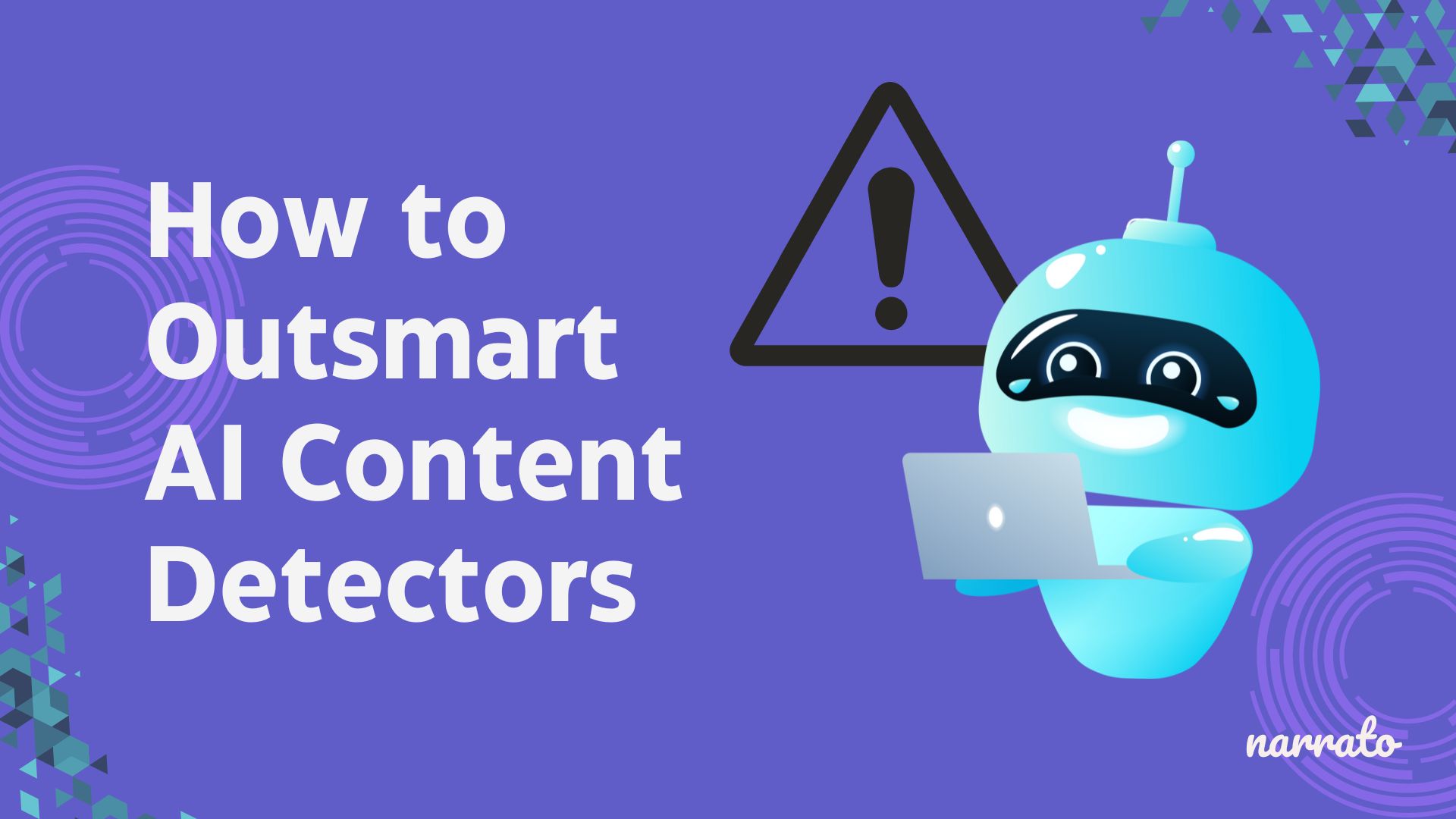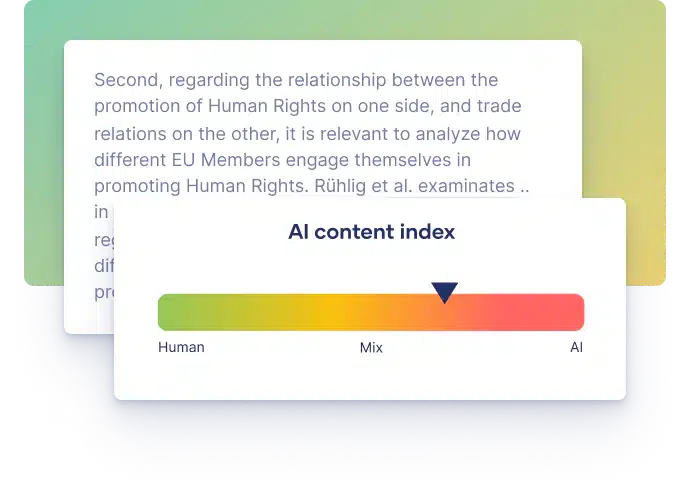Improve Content Quality with the Reliable AI Detector for Plagiarism Checks
Improve Content Quality with the Reliable AI Detector for Plagiarism Checks
Blog Article
Understanding the Significance of an Ai Detector in Today's Digital Landscape
As expert system continues to penetrate numerous facets of material development, identifying in between machine-generated and human-generated material has come to be progressively intricate. This evolving landscape provides considerable challenges related to credibility and trustworthiness, demanding the development of AI detection tools. These tools not only help in identifying AI-produced content however also maintain the integrity of information dissemination. Recognizing their duty ends up being imperative as we navigate a future where the trustworthiness of media is under constant scrutiny. What ramifications might this have for customers and makers alike?
The Surge of AI Web Content

The surge of AI-generated content has considerable ramifications for different industries, consisting of enjoyment, advertising and marketing, and journalism - ai detector. Organizations are increasingly using these technologies to improve efficiency, individualize content, and involve audiences better. The capability to assess substantial datasets permits AI systems to tailor web content to fulfill particular customer choices, giving a more customized experience
Nonetheless, the spreading of AI material additionally elevates important factors to consider for content creators and customers alike. As AI becomes much more incorporated into web content production operations, comprehending the subtleties of AI-generated product is important for keeping quality and significance in a quickly advancing digital atmosphere. Welcoming this technological improvement while remaining alert concerning its effects is critical for stakeholders in the electronic media landscape.
Difficulties of Credibility
The development of AI-generated material has presented significant obstacles relating to authenticity in digital media. As algorithms become a lot more innovative, comparing machine-generated and human-created web content becomes increasingly difficult. This blurring of lines elevates problems about the trustworthiness of details and the capacity for misinformation to multiply.
Among the main obstacles is the erosion of count on among consumers. With AI capable of producing practical text, pictures, and videos, people may locate it challenging to determine authentic sources from deceptive ones. This apprehension can lead to a more comprehensive mistrust of all electronic web content, complicating initiatives to determine credible information.
In addition, the ramifications for copyright are considerable. As AI tools create material based upon existing jobs, questions pertaining to possession and creativity occur. Content developers might struggle to shield their work from anonymous AI recreations, threatening their rights and source of incomes.
Lastly, the potential for harmful usages of AI-generated material, such as deepfakes and automatic propaganda, poses major honest and societal dangers. These challenges emphasize the immediate need for structures that promote credibility in the electronic landscape, guaranteeing that details continues to be trustworthy and trustworthy.
Role of AI Detectors
Dealing with the obstacles of credibility in electronic media requires innovative services, and AI detectors have emerged as a critical tool in this initiative. These modern technologies are designed that site to analyze and recognize content created by expert system, thereby assisting in the discernment in between human-created and machine-generated materials. The duty of AI detectors prolongs past simple recognition; they likewise add to maintaining the stability of info consumed by the public.
AI detectors make use of sophisticated formulas to inspect numerous components of electronic web content, consisting of etymological patterns, architectural anomalies, and particular pens that suggest automation. Their application extends numerous fields, consisting of journalism, education and learning, and social media, where the existence of AI-generated web content can bring about false information and disintegration of trust fund.

Benefits of Making Use Of AI Detectors
Making sure credibility in electronic content personifies the fundamental need for count on information sources, and AI detectors work as an effective ally in this pursuit. By determining AI-generated content, these devices aid maintain the integrity of information, therefore shielding customers from misinformation and enhancing total material high quality.
Among the key benefits of making use of AI detectors is their capacity to enhance material verification procedures, substantially minimizing the moment and effort required to examine the authenticity of electronic products. This performance permits material developers, educators, and organizations to try this concentrate on creating reputable and top quality information, as opposed to spending excessive sources on fact-checking.
Additionally, AI detectors foster responsibility among material creators. The knowledge that AI-generated material can be recognized encourages openness and moral practices in content production. This, subsequently, adds to a much more enlightened digital neighborhood, as users can confidently involve with validated information.
Future of Content Confirmation
As the landscape of digital content remains to advance, the future of web content verification tests both presents and possibilities for preserving authenticity. As AI innovations breakthrough, so too do the approaches for distributing and producing misinformation (ai detector). This arms race between content designers and confirmation tools necessitates the advancement of a lot more innovative AI detectors efficient in discerning real material from adjusted or fabricated product

Moreover, the surge of decentralized technologies, such as blockchain, holds promise for verifying material provenance, guaranteeing that customers can map the origins of the info they consume. Ultimately, the future of content verification will hinge on our ability to introduce despite evolving hazards, fostering a digital atmosphere where credibility is recognized and maintained as a basic principle.
Conclusion
In conclusion, the proliferation of AI-generated material demands robust mechanisms for credibility verification. The future of web content verification hinges on the efficiency of AI detectors in keeping reputation throughout various media platforms.
AI content development tools, such as all-natural language processing designs and generative adversarial networks, enable individuals and services to produce top quality material at unmatched rates and lower prices.
Nonetheless, visit our website the spreading of AI material also raises important factors to consider for material designers and consumers alike. As the refinement of AI-generated material continues to advance, the role of AI detectors ends up being increasingly vital in protecting authenticity and advertising openness in electronic communication. The expertise that AI-generated web content can be identified encourages openness and ethical techniques in content manufacturing.As the landscape of electronic material continues to advance, the future of material verification provides both challenges and possibilities for preserving credibility.
Report this page